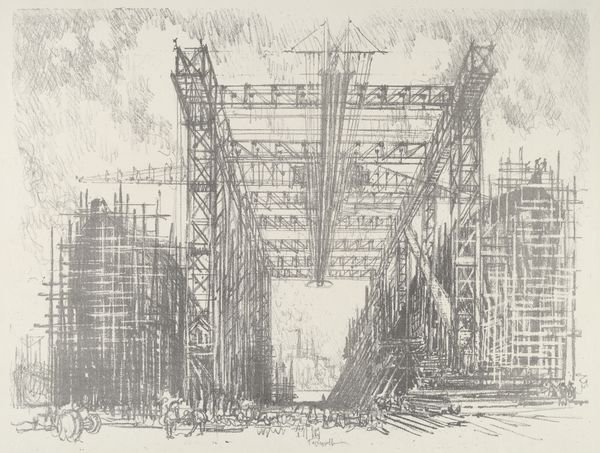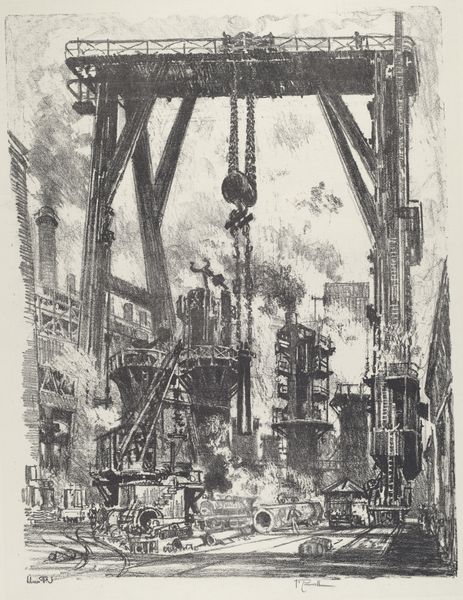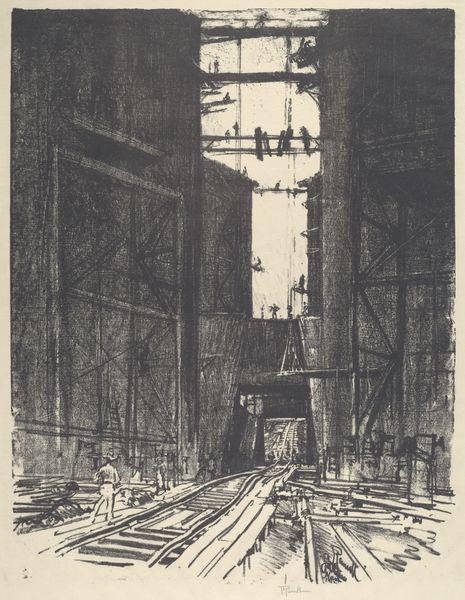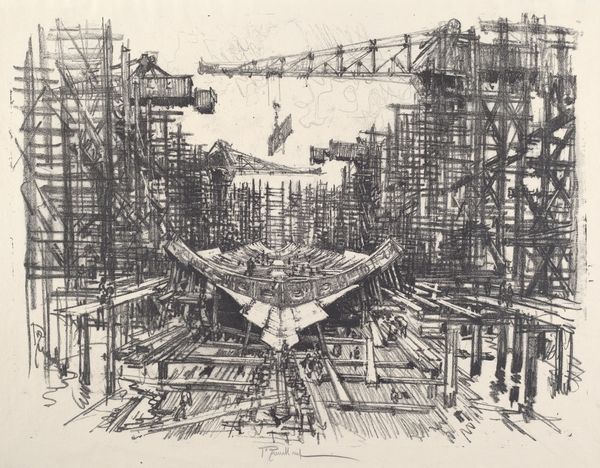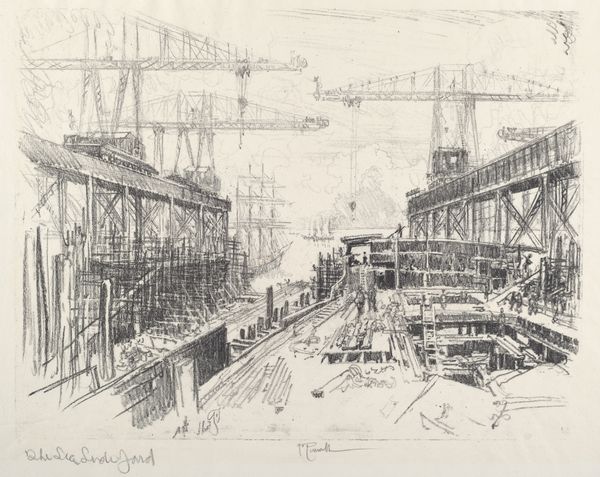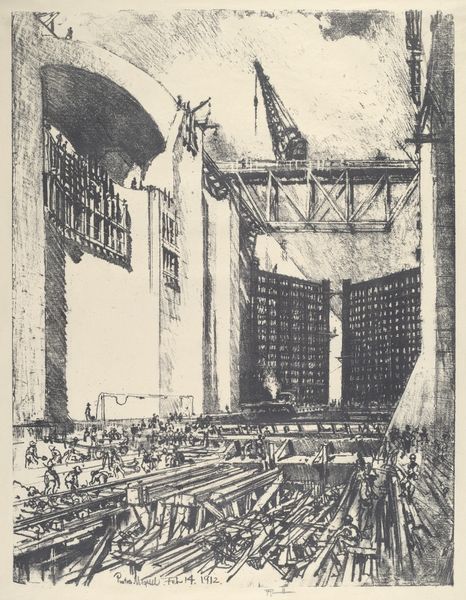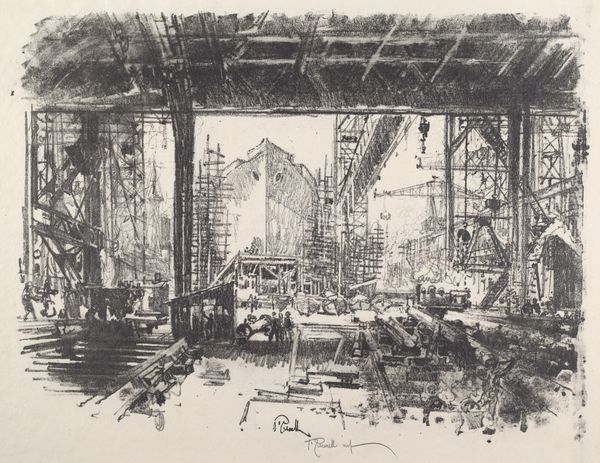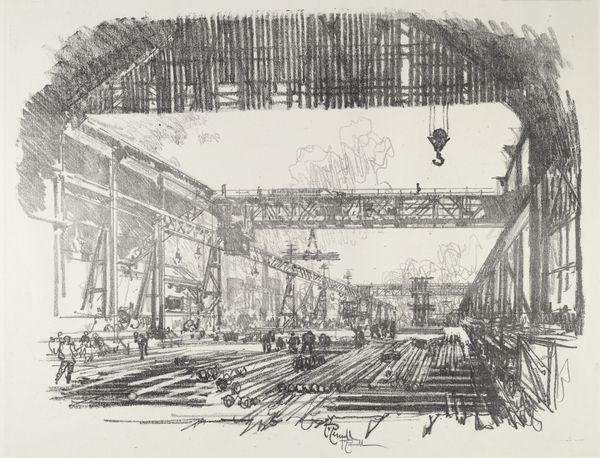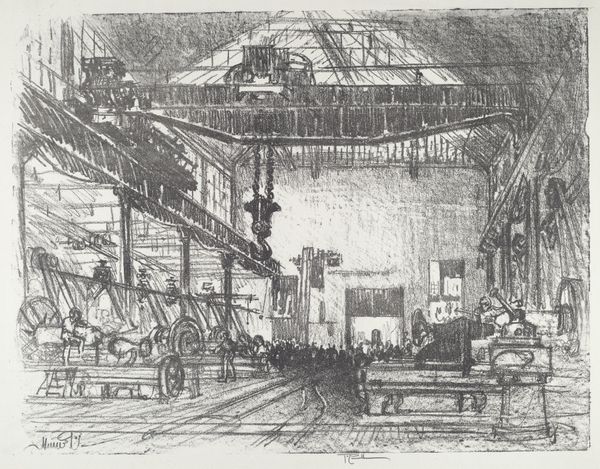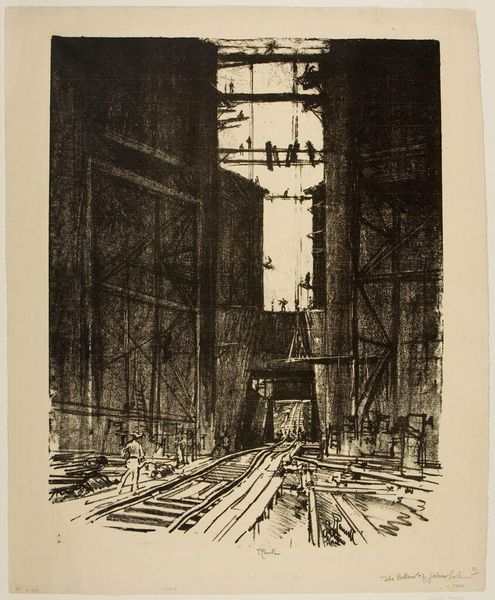
print, etching
# print
#
etching
#
line
#
cityscape
#
modernism
Copyright: National Gallery of Art: CC0 1.0
Curator: Joseph Pennell created this etching, titled "Building Destroyers, No. I," in 1917. What are your initial thoughts? Editor: It feels incredibly frantic and unsettling. There's a chaos in the lines, a sense of immense, almost overwhelming construction. Is it supposed to represent a positive vision of progress, or is there something more ominous at play? Curator: Considering the date, 1917, amidst World War I, it's difficult to separate it from the atmosphere of the time. Pennell, as an artist deeply engaged with his socio-political context, likely intended to convey the frenzied, almost desperate pace of wartime shipbuilding. These weren’t just ships; they were instruments of destruction. Editor: Exactly. Looking at it through that lens, it’s impossible to ignore the implied violence. The angular lines, the sheer scale of the cranes, they all seem to contribute to a visual representation of industrial warfare and masculinity. Are there other works from this period by Pennell? Curator: Absolutely. He made several lithographs and etchings that portray the rapid industrial expansion and military build-up during the war. Pennell often explored the intersection of industry, labor, and national power. You see how the cityscapes turn into almost surreal, oppressive environments. The human figure is dwarfed or completely absent, suggesting individual powerlessness in the face of industrial might. Editor: And that complete lack of human presence makes the print even more chilling, I think. We’re left with these cold, impersonal structures rising skyward. This raises crucial questions about the relationship between technological advancement, masculinity, and warfare, particularly during periods of intense social upheaval. Pennell isn’t merely documenting progress, he's exposing its potential cost, which becomes so central in interwar reflections. Curator: Indeed. And his chosen medium, etching, is quite effective in conveying this message. The sharp lines, the tonal contrasts, all heighten the dramatic effect, contributing to this atmosphere. So the style echoes modernism, but serves documentary purposes, and political expression. Editor: Well, I appreciate having a closer look and situating this work within a wider social framework. Thank you! Curator: My pleasure! Understanding the political and historical backdrop allows for a richer engagement with Pennell's vision.
Comments
No comments
Be the first to comment and join the conversation on the ultimate creative platform.
